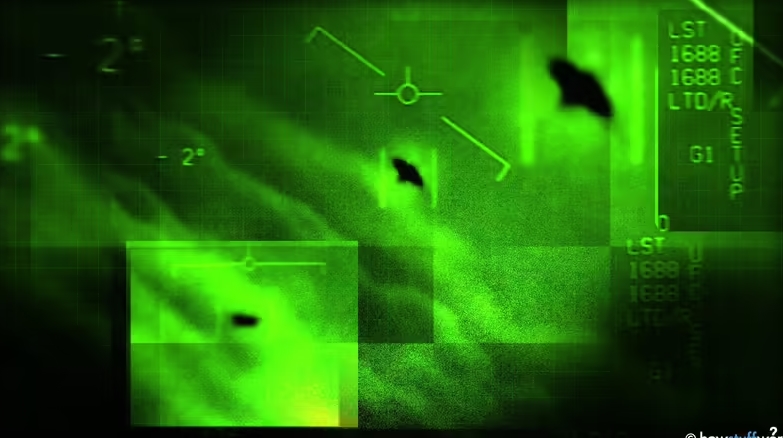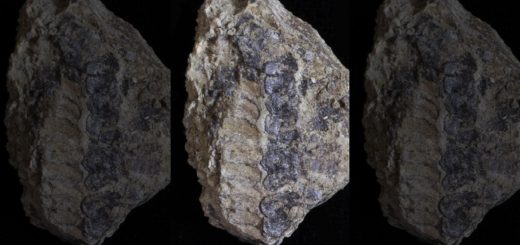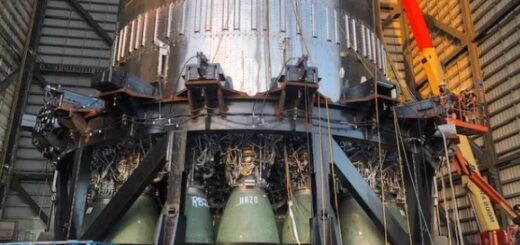Are Pentagon-confirmed UFOs a National Security Threat?

There’s a reason why you may be hearing a lot about UFOs lately. In June, the Pentagon and the Director of National Intelligence will present to Congress an unclassified report about unusual sightings by U.S. service members of UFOs — unidentified flying objects. National security folks, however, refer to them as unidentified aerial phenomena, or UAPs.
Apparently, there have been a lot of reports of UAPs in recent years. We — the general public — just haven’t heard much about them. Any rumblings of flying saucers buzzing in our atmosphere have been vehemently denied by the government for decades. That is, until recently. So, what changed?
The U.S. Government Is Investigating Strange Sightings
In 2007, the U.S. government created the Aerospace Threat Identification Program, or AATIP, a hush-hush organization hidden away in the Pentagon. The program was charged with collecting and analyzing information regarding strange aerial objects that had been reported to the Department of Defense (DoD) by service members through the years.
In 2008, Luis Elizondo joined the effort with 20 years’ experience running military operations under his belt. In 2010, he was tapped to lead the program and sharpened its focus on national security. He fielded reports of UAP sightings, doing due diligence to vet them.
One tucked-away report that caught his eye was that of a strange Tic-Tac-shaped object over the Pacific Ocean reported in November 2004 by two former U.S. Navy pilots. Commander David Fravor and Lt. Commander Alex Dietrich, were training with the Nimitz Carrier Strike Group. Radar from a ship that was part of the training group had detected “multiple anomalous aerial vehicles” in the horizon descending 80,000 feet (24,380 meters) in less than a second, according to a “60 Minutes” report earlier this month. Fravor and Dietrich were sent out in separate aircraft to investigate, each with a weapons system officer in their back seat.
As they approached, they saw an area of roiling water about the size of a 737 airplane. Hovering above it was the Tic-Tac-shaped object making “no predictable movement, no predictable trajectory,” Dietrich said. The object had no markings, no wings, and no exhaust plumes. When Fravor flew in for a closer look, the object flew off so fast it seemed to disappear. It was spotted seconds later on radar approximately 60 miles (96 kilometers) away.
That was just the tip of the iceberg. There were many more reports by naval aviators who witnessed strange cubes or triangles doing things that no known aircraft were capable of doing — stopping rapidly, turning instantly, and accelerating immediately to speeds of 11,000 mph (17,700 kph) or more. And they were doing these things in restricted airspace, often in airspace designated for fighter-jet training, such as off the coast of San Diego, or off the coasts of Virginia and Jacksonville, Florida.
What Are UAPs Capable Of?
We talked to Elizondo in an email interview and, according to him, the UAP that have been tracked and monitored for decades exhibit what have become referred to as “The Five Observables.” These are:
antigravity lift
sudden and instantaneous acceleration
hypersonic velocities without any visible signatures, sonic booms or observable means of propulsion
low observability or cloaking
trans-medium travel — the ability to operate in extraordinary ways from the vacuum of space to the depts of the oceans without impedance or aerodynamic limitations
It’s these characteristics that baffle national security experts the most. “We do not have anything in our arsenal that can perform in these ways and we have a high degree of confidence that no known terrestrial ally or adversary possesses this technology either,” Elizondo says.
What Could They Be?
Pilots have speculated that the objects were either secret U.S. technology or adversary spy crafts, according to Elizondo on “60 Minutes.”
“Remember, we’ve been observing these performance characteristics for many decades,” Elizondo assures. “If a foreign adversary had developed these technologies 75 years ago, and we were still unaware they possessed it, it would be the most extraordinary intelligence failure in United States history.”
Then does that mean they’re from outer space? Rather than jumping to conclusions, Elizondo suggests we open our minds to the possibilities.
“These vehicles may originate from outer space, inner space, or even the space in between,” he says. “We could be dealing with an advanced, self-replicating AI which communicates with itself instantaneously across vast distances using a quantum internet. Perhaps an advanced underwater civilization is native to our planet, and we’re now advanced enough to be observing them moving through our oceans, airspace and upper atmosphere.”
Do UAPs Pose a Threat to National Security?
There’s been no active hostility or aggressive action taken by these objects, though “they’re clearly powerful enough to do harm if that were their intention,” Elizondo says. Any time an advanced vehicle is operating in restricted airspace with impunity, you have to consider the possibility that they could be a threat if they wanted to be, he says.
“If we want to fully understand what we’re observing, and to communicate those findings to the public, we need a whole-of-government approach that is collaborative and transparent,” Elizondo says.
Is the U.S. Government Still Tracking UAPs?
Funding for AATIP ran out in 2012, but Elizondo continued to investigate UAP sightings until 2017, when he got fed up with the Pentagon’s skepticism, and quit. Before he left, however, he declassified three Navy videos of UAPs. And then he started to spread the word.
Meanwhile, Christopher Mellon, former deputy assistant secretary of defense for intelligence for presidents Bill Clinton and George W. Bush, acting as a civilian, shared those declassified videos with The New York Times. He had to do did it, he told “60 Minutes,” to get the Defense Department to take this “national security issue” seriously.
Raising public awareness prompted Congress to take notice, and the Pentagon to admit the existence of AATIP. Last August, the Pentagon reenacted the program, changing the name to the UAP Task Force. Service members were finally given the green light to share reports of UAP sightings.



 Creators of mankind
Creators of mankind Description of “Tall white aliens”
Description of “Tall white aliens” Where they came from?
Where they came from? About hostile civilizations
About hostile civilizations The war for the Earth
The war for the Earth “Tall white aliens” about eternal life
“Tall white aliens” about eternal life Video: “Nordic aliens”
Video: “Nordic aliens” Aliens
Aliens Alien encounters
Alien encounters The aliens base
The aliens base UFO
UFO Technology UFO
Technology UFO Underground civilization
Underground civilization Ancient alien artifacts
Ancient alien artifacts Military and UFO
Military and UFO Mysteries and hypotheses
Mysteries and hypotheses Scientific facts
Scientific facts


















